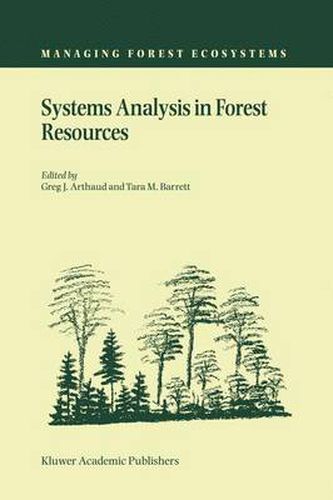Readings Newsletter
Become a Readings Member to make your shopping experience even easier.
Sign in or sign up for free!
You’re not far away from qualifying for FREE standard shipping within Australia
You’ve qualified for FREE standard shipping within Australia
The cart is loading…






This title is printed to order. This book may have been self-published. If so, we cannot guarantee the quality of the content. In the main most books will have gone through the editing process however some may not. We therefore suggest that you be aware of this before ordering this book. If in doubt check either the author or publisher’s details as we are unable to accept any returns unless they are faulty. Please contact us if you have any questions.
Well-managed forests and woodlands are a renewable resource, producing essential raw material with minimum waste and energy use. Rich in habitat and species diversity, forests may contribute to increased ecosystem stability. They can absorb the effects of unwanted deposition and other disturbances and protect neighbouring ecosystems by maintaining stable nutrient and energy cycles and by preventing soil degradation and erosion. They provide much-needed recreation and their continued existence contributes to stabilizing rural communities. Forests are managed for timber production and species, habitat and process conservation. A subtle shift from multiple-use management to ecosystems management is being observed and the new ecological perspective of multi-functional forest management is based on the principles of ecosystem diversity, stability and elasticity, and the dynamic equilibrium of primary and secondary production. Making full use of new technology is one of the challenges facing forest management today. Resource information must be obtained with a limited budget. This requires better timing of resource assessment activities and improved use of multiple data sources. Sound ecosystems management, like any other management activity, relies on effective forecasting and operational control. The aim of this series is to present state-of-the-art research results relating to the practice of forest management. Each reference book, monograph or proceedings volume will be focused to deal with a specific context.
$9.00 standard shipping within Australia
FREE standard shipping within Australia for orders over $100.00
Express & International shipping calculated at checkout
This title is printed to order. This book may have been self-published. If so, we cannot guarantee the quality of the content. In the main most books will have gone through the editing process however some may not. We therefore suggest that you be aware of this before ordering this book. If in doubt check either the author or publisher’s details as we are unable to accept any returns unless they are faulty. Please contact us if you have any questions.
Well-managed forests and woodlands are a renewable resource, producing essential raw material with minimum waste and energy use. Rich in habitat and species diversity, forests may contribute to increased ecosystem stability. They can absorb the effects of unwanted deposition and other disturbances and protect neighbouring ecosystems by maintaining stable nutrient and energy cycles and by preventing soil degradation and erosion. They provide much-needed recreation and their continued existence contributes to stabilizing rural communities. Forests are managed for timber production and species, habitat and process conservation. A subtle shift from multiple-use management to ecosystems management is being observed and the new ecological perspective of multi-functional forest management is based on the principles of ecosystem diversity, stability and elasticity, and the dynamic equilibrium of primary and secondary production. Making full use of new technology is one of the challenges facing forest management today. Resource information must be obtained with a limited budget. This requires better timing of resource assessment activities and improved use of multiple data sources. Sound ecosystems management, like any other management activity, relies on effective forecasting and operational control. The aim of this series is to present state-of-the-art research results relating to the practice of forest management. Each reference book, monograph or proceedings volume will be focused to deal with a specific context.